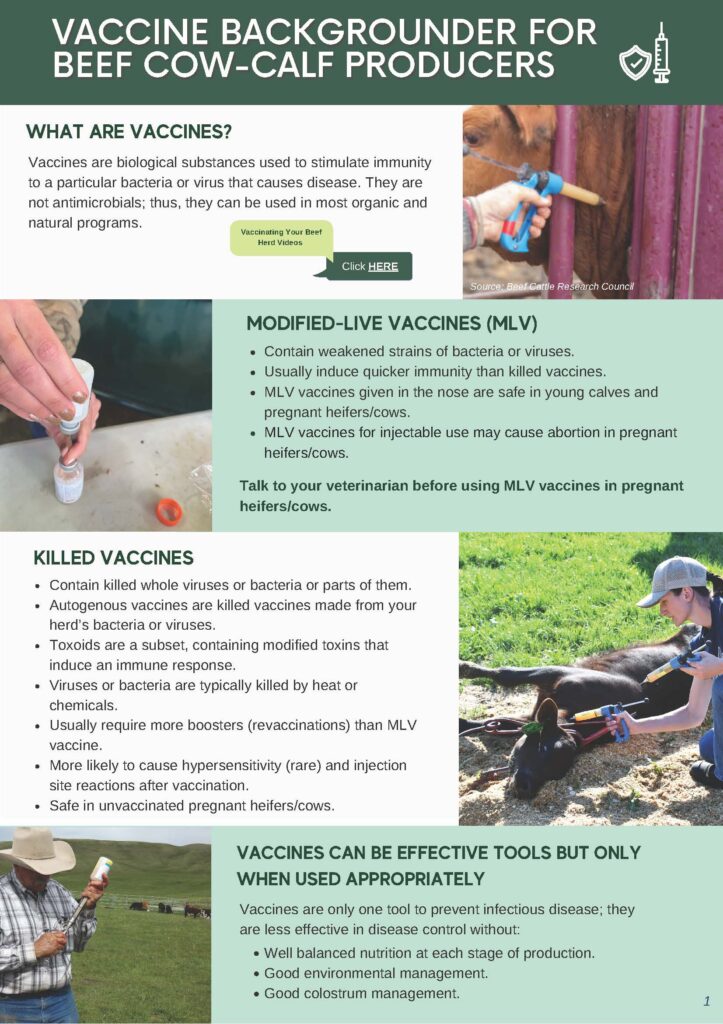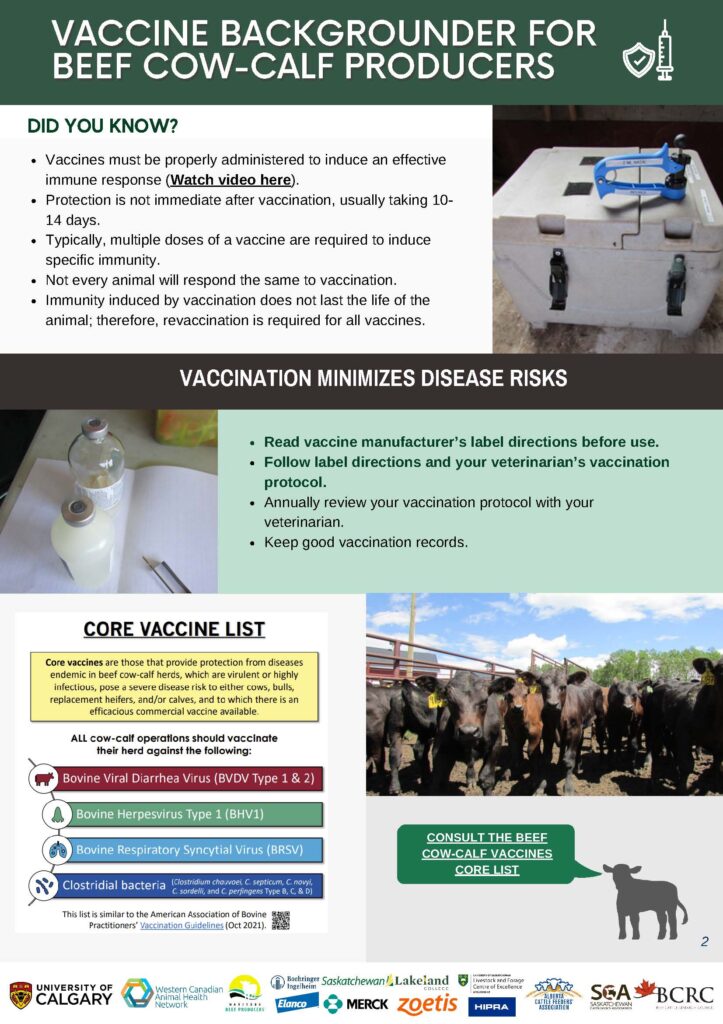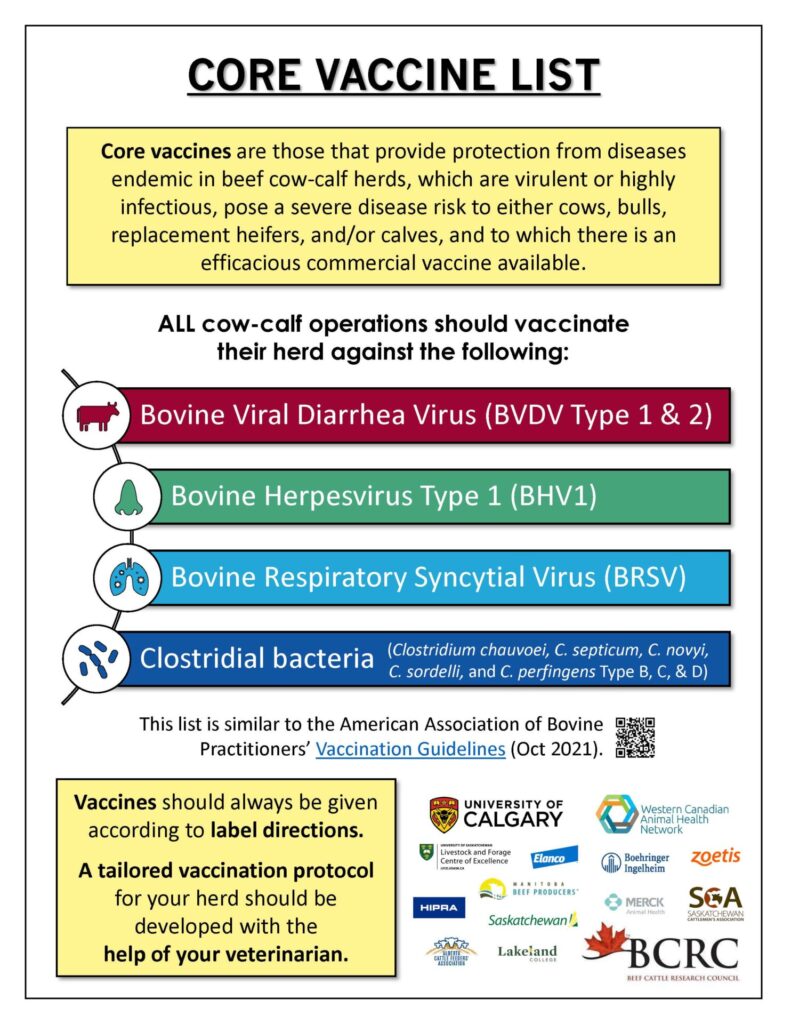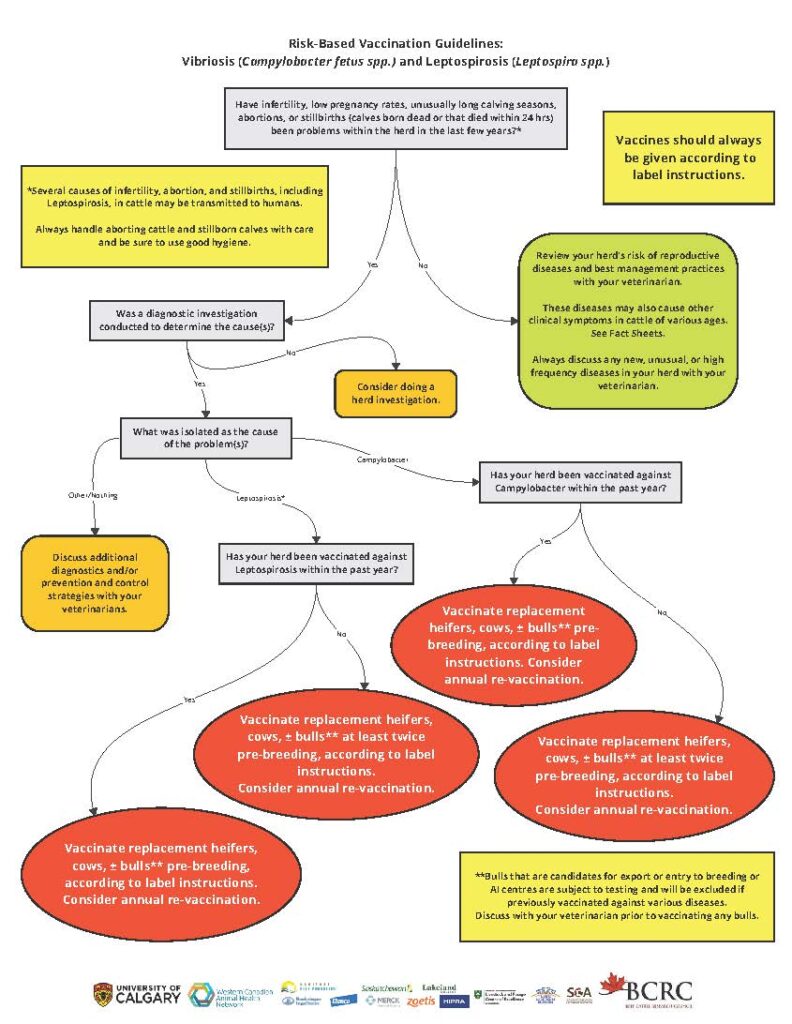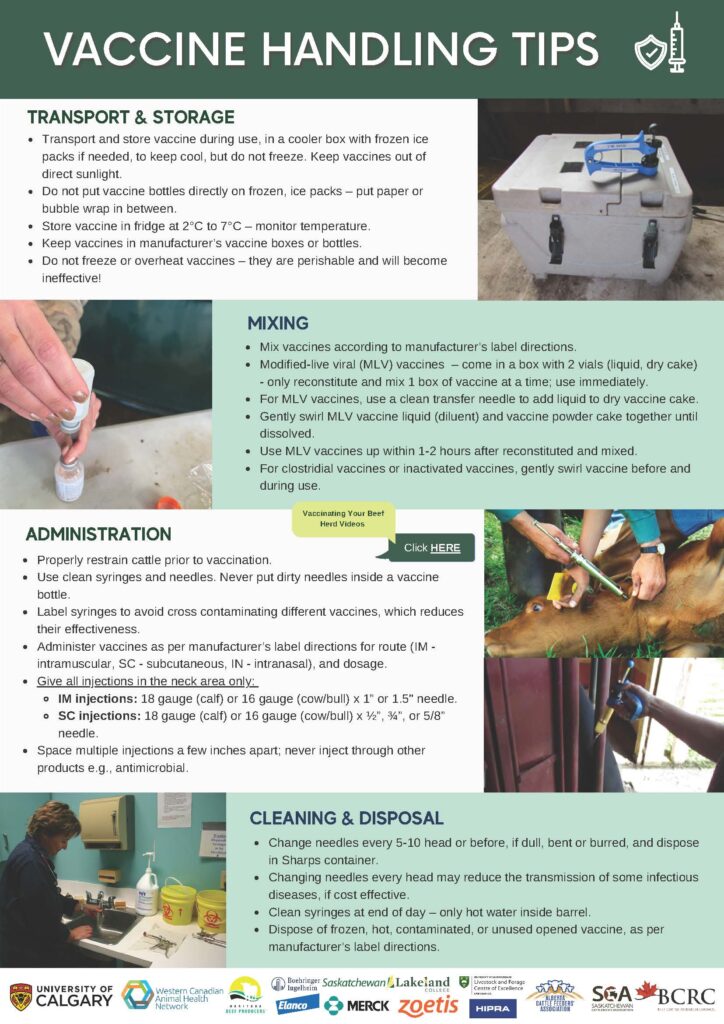New Vaccination Resources Now Available
Remarque : cette page web n’est actuellement disponible qu’en anglais.
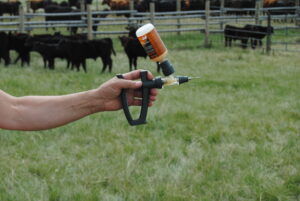
A solid vaccination program is vital to maintaining health and productivity in all cow-calf herds. Understanding the myriad of diseases that pose a risk to your herd, the products that protect against them and how those products work is a daunting task, but critical to protecting animals and preventing financial losses.
Through a recently completed BCRC-funded project, a team of experts has developed a collection of new resources that take the stress out of making these important decisions.
Vaccine Backgrounder
Increasing your knowledge of how vaccines work and why to use them will help you choose the right product for the job. Many factors can influence these decisions such as:
- the specific needs of your herd,
- your management practices and
- what diseases are prevalent in your herd or geographical area.
Click images below for the two-page Vaccine Backgrounder PDF.
Core Vaccines
The core vaccine list is the standard protocol for all herds across the nation and is a good starting point for your vaccination program. Once you and your veterinarian have established those core vaccines, they can help you choose what, if any additional vaccinations (risk-based vaccines) may be necessary for your herd.
Click here for a list of vaccination guidelines for core vaccines.
Risk-Based Vaccinations
Risk-based vaccination recommendations are generally made once a vet-client-patient-relationship (VCPR) has been established between a producer and their veterinarian. These are a set of vaccines that are only administered if a herd or group of animals is at risk of contracting or spreading a specific disease pathogen. Risk factors can include previous exposure or disease outbreaks, geographical risk, proximity or comingling with other herds and climate. Each herd, and even each stage of production within that herd, will have unique vaccination requirements.
Risk-based vaccine decision trees (like this one for Vibriosis and Leptospirosis) are available to help producers and their veterinarians walk through a risk assessment for specific vaccines and determine what protocol is best for each group of cattle.
Vaccine Handling
Regardless of what product you choose, it is important that it is handled properly. Vaccines can only be effective if stored properly and administered according to label directions. Mishandling vaccines reduces how well they work and puts your herd at risk of disease which can lead to significant financial loss.
Vaccination is relatively inexpensive insurance, but the cost of these products is not insignificant. Knowing what products to use, how they can fit into your current management systems and administering them properly will make certain you are getting the biggest bang for your investment.
Le partage ou la réimpression des articles du blog du BCRC est bienvenu et et encouragé. Veuillez mentionner le Conseil de recherche sur les bovins de boucherie, indiquer l’adresse du site web, www.BeefResearch.ca/fr, et nous faire savoir que vous avez choisi de partager l’article en nous envoyant un courriel à l’adresse info@beefresearch.ca.
Vos questions, commentaires et suggestions sont les bienvenus. Contactez-nous directement ou suscitez une discussion publique en publiant vos réflexions ci-dessous.
